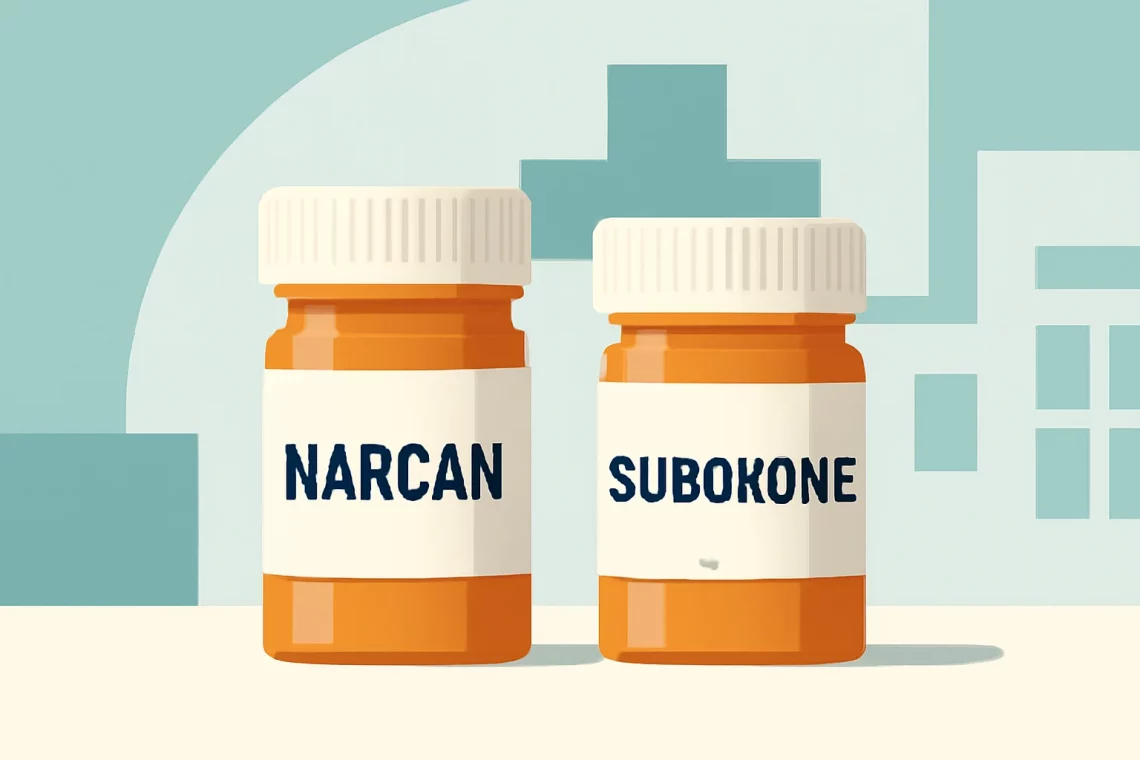
Narcan vs Suboxone: Understanding Their Roles in Opioid Treatment
The opioid crisis has become a pressing public health issue, affecting countless individuals and communities across the globe. As the prevalence of opioid use and addiction has increased, so too has the need for effective treatment options and harm reduction strategies. In the face of this epidemic, two medications have emerged as critical tools in combating opioid overdose and dependence: Narcan (naloxone) and Suboxone (buprenorphine/naloxone). While both medications serve essential roles in addressing opioid-related issues, they operate through different mechanisms and are used in distinct contexts.
Narcan is primarily known for its ability to reverse opioid overdoses rapidly. It acts as an opioid antagonist, effectively displacing opioids from their receptors in the brain. This immediate action has made Narcan a lifesaving tool for emergency responders and individuals in the community. On the other hand, Suboxone is used as a part of a comprehensive treatment plan for opioid dependence. It combines buprenorphine, a partial agonist, with naloxone to mitigate the potential for misuse while alleviating withdrawal symptoms and cravings.
Understanding the differences between Narcan and Suboxone is essential for anyone seeking to navigate the complex landscape of opioid treatment and harm reduction. As we explore these two medications, it becomes clear that they serve different, yet complementary, purposes in the fight against opioid addiction and overdose.
Narcan: A Lifesaving Opioid Antagonist
Narcan, or naloxone, is a medication specifically designed to counteract the effects of opioid overdoses. It is a life-saving intervention that can be administered via injection or nasal spray, making it accessible for use in emergency situations. When an individual experiences an opioid overdose, their breathing can slow or stop entirely, leading to death. Narcan works by attaching to the same receptors in the brain that opioids do, effectively reversing the overdose by restoring normal breathing and consciousness.
The importance of Narcan cannot be overstated, especially in the context of the ongoing opioid crisis. Studies have shown that when Narcan is readily available, it significantly reduces the number of deaths from opioid overdoses. Many community organizations and health departments have initiated programs to distribute Narcan to the public, providing training on its use to ensure that bystanders can respond effectively in an emergency.
While Narcan is effective in reversing overdoses, it is essential to understand its limitations. Narcan’s effects are temporary, typically lasting between 30 to 90 minutes, depending on the dose and the individual’s metabolism. This means that if a person has taken a long-acting opioid, they may require multiple doses of Narcan or additional medical attention to prevent a return to overdose symptoms.
Furthermore, Narcan does not address the underlying issues of opioid addiction. While it can save lives in acute situations, it does not provide a treatment plan for individuals struggling with opioid use disorder. Therefore, it is often recommended that individuals who have experienced an overdose seek further support and treatment options, such as counseling and rehabilitation services.
Suboxone: A Comprehensive Approach to Opioid Dependence
Suboxone is a medication that plays a crucial role in the long-term treatment of opioid dependence. It is a combination of buprenorphine, a partial opioid agonist, and naloxone, which is included to deter misuse. Buprenorphine works by partially activating opioid receptors in the brain, which helps alleviate withdrawal symptoms and cravings without producing the same euphoric effects as full agonists like heroin or prescription opioids.
The inclusion of naloxone in Suboxone is significant because it helps prevent misuse. If Suboxone is taken as prescribed—sublingually—it is effective in reducing cravings and withdrawal symptoms. However, if someone attempts to inject Suboxone to achieve a high, naloxone will block the effects of the opioid, thereby discouraging misuse.
One of the key advantages of Suboxone is its ability to stabilize individuals with opioid use disorder over the long term. Unlike Narcan, which is used in emergency situations, Suboxone is part of a broader treatment strategy. It is often prescribed alongside counseling and support services to help individuals address the psychological and behavioral aspects of addiction.
Suboxone treatment can last for an extended period, with some individuals remaining on the medication for months or even years. This long-term approach allows individuals to regain stability in their lives, focusing on recovery and rebuilding relationships that may have been impacted by their substance use.
However, it is important for individuals considering Suboxone treatment to consult with healthcare professionals. Like any medication, Suboxone has potential side effects, and its use must be closely monitored to ensure safety and efficacy.
Comparing the Roles of Narcan and Suboxone in Opioid Treatment
When evaluating Narcan and Suboxone, it’s clear that while both medications are integral to addressing the opioid crisis, they fulfill different roles within the spectrum of care. Narcan is a crucial emergency response tool that provides immediate intervention in overdose situations, whereas Suboxone offers a longer-term solution for individuals grappling with opioid dependence.
The primary difference lies in their usage contexts. Narcan is utilized in acute emergency scenarios, providing a critical safety net for individuals at risk of overdose. It is an essential component of harm reduction strategies, particularly in communities heavily impacted by the opioid epidemic.
In contrast, Suboxone represents a proactive approach to managing opioid dependence. By addressing withdrawal symptoms and cravings, it enables individuals to engage in recovery processes and make meaningful changes in their lives. The combination of medication and therapy can significantly improve outcomes for those in recovery.
Furthermore, understanding the distinction between these two medications can empower individuals and their families to make informed decisions about care. Recognizing that Narcan can save a life in an emergency, while Suboxone can support a sustainable recovery journey, is vital for those affected by opioid use disorder.
As society continues to grapple with the complexities of opioid addiction, the importance of both Narcan and Suboxone remains clear. Each medication plays a unique role, and together, they form a comprehensive strategy to combat the opioid crisis.
In conclusion, while Narcan and Suboxone serve different purposes, their combined use can significantly enhance the overall response to the opioid epidemic. By leveraging both emergency interventions and long-term treatment options, we can work towards reducing the stigma surrounding addiction and fostering a more supportive environment for recovery.
**Disclaimer:** This article is for informational purposes only and does not constitute medical advice. For any health-related issues, please consult a qualified healthcare professional.




